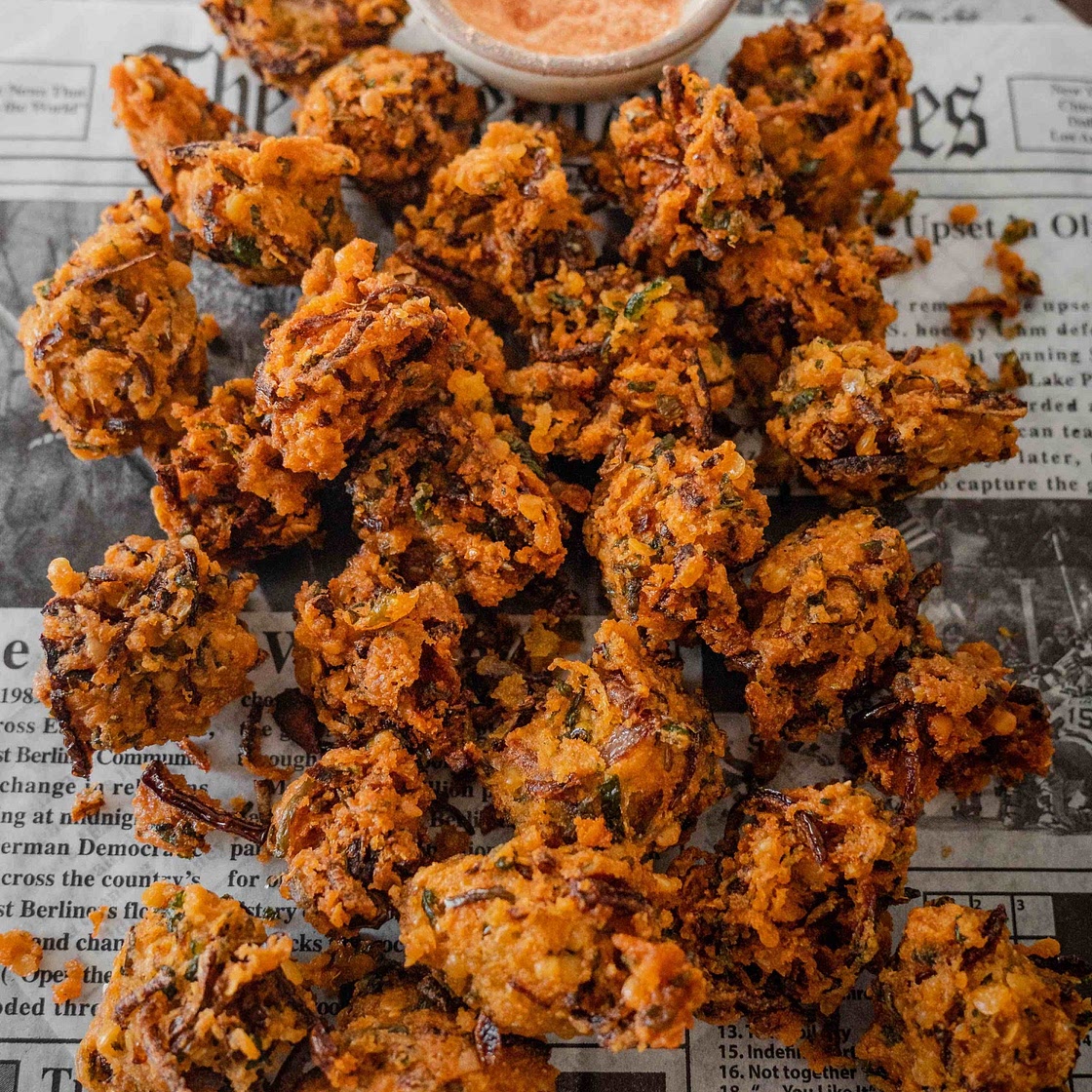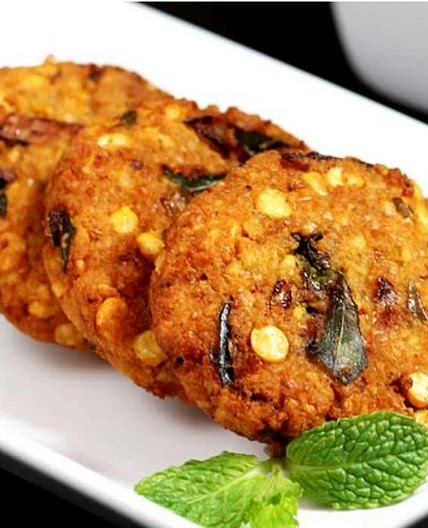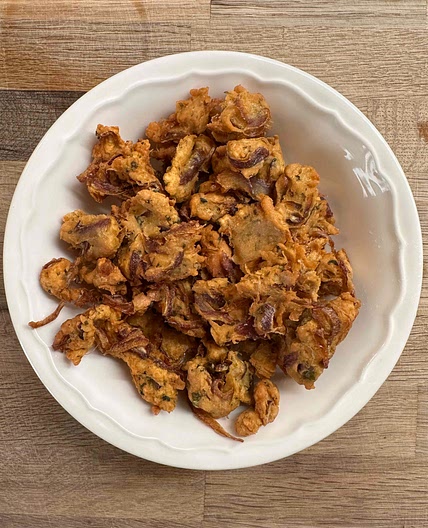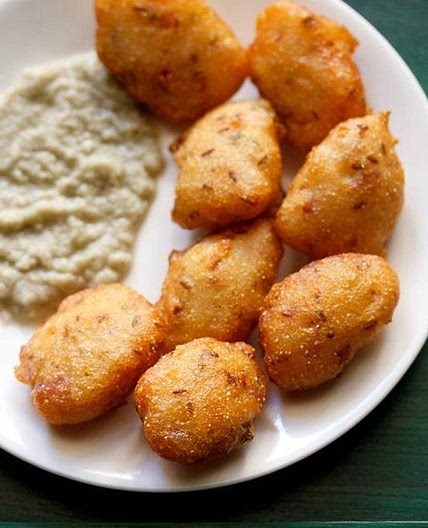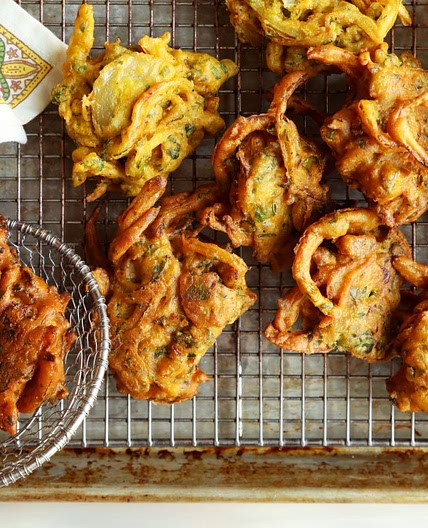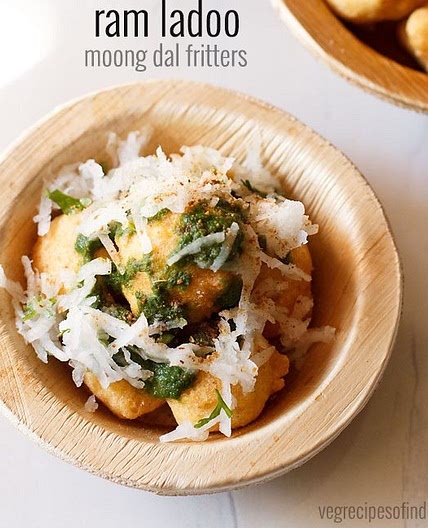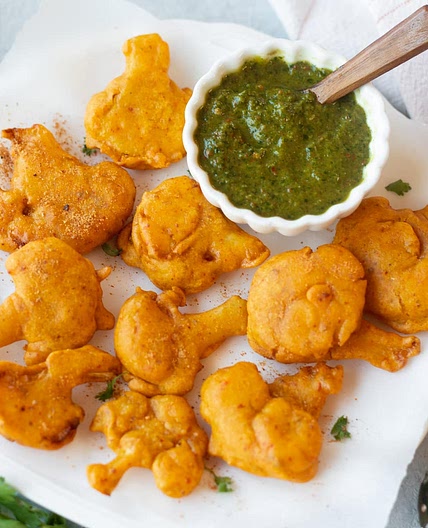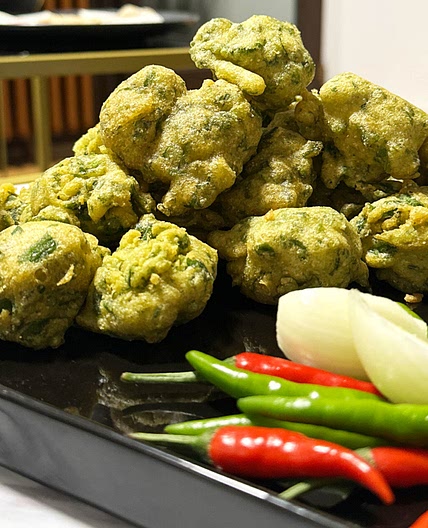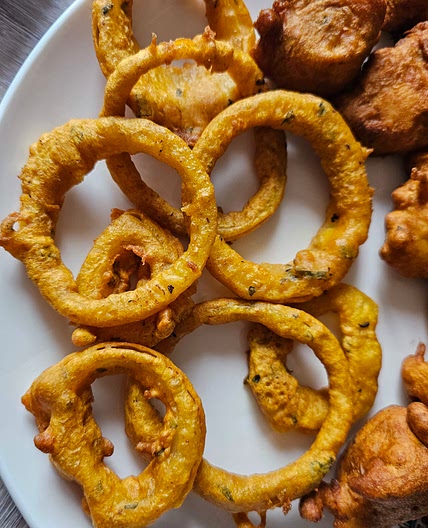By The Spice Odyssey — thespiceodyssey.net
Piyaju | Crispy & Spicy Onion Fritters | Bangladeshi Ramadan Special — The Spice Odyssey
17 steps
Prep:10minCook:30min
If it’s deep fried, it is Bengali! Piyaju, loosely translated to spicy onion fritters. This is a crispy bite sized snack and is loved by the whole nation, a special treat popular during the month of Ramadan.
Updated at: Thu, 17 Aug 2023 08:51:05 GMT
Nutrition balance score
Great
Glycemic Index
31
Low
Glycemic Load
13
Moderate
Nutrition per serving
Calories254.7 kcal (13%)
Total Fat3.1 g (4%)
Carbs42.5 g (16%)
Sugars2.3 g (3%)
Protein16 g (32%)
Sodium586.1 mg (29%)
Fiber7.2 g (26%)
% Daily Values based on a 2,000 calorie diet
Ingredients
6 servings
Instructions
Step 1
Strain the lentils from the soaking water, about half an hour before making the batter — this helps getting rid of the excess moisture. Remember wet batter = soggy fritters + hot oil explosion.
Step 2
Set aside about 1/8 cup lentils and coarse-grind the rest with the ginger.
Step 3
Note the water stuck to the lentils should be enough but if it's too dry in the blender, you can add 1 tbsp water at a time. Try not to make it a wet batter, It should be a dry dough like consistency.
Step 4
In a large bowl, separate the sliced onions and combine it with the diced chilis, cilantro and salt.
Step 5
Add the red lentil paste and the whole lentils that was set aside earlier. Combine the lentil mix really well with the onion and herbs mix.
Step 6
Note do not make the batter ahead of time and do not let the batter sit around. You must start frying immediately after you make the batter.
Step 7
In a wide Dutch oven over medium heat, add enough oil to submerge and deep fry the fritters.
Step 8
Wait until the oil is hot to add the fritters. How to tell if the oil is ready — when you stick a chopstick or wooden skewer, if the oil starts to form bubbles around it, then it's ready.
Step 9
With all 5 fingers pick up the batter. The idea is to only pick up as much onion and lentil mix as your five fingers allow. Gently let go and drop what you are holding in the hot oil right away. Do not try to flatten or shape what you pick up. Also try not to overcrowd the Dutch oven, its best to fry them in batches of 10-12 (depending on how wide or compact your frying pan is).
Step 10
The piyaju will sink to the bottom and may even stick to the bottom when you first drop them in the hot oil. Do not fret and do not touch it. Once the oil starts to seep in, they will unstick from the bottom on their own and start floating to the top.
Step 11
Once the piyajus are floating and the bottom has changed to a light yellow color, flip it on the other side. Continue flipping every now and then until they have formed a pale yellow-orange color.
Step 12
Remove them from the hot oil and allow them to cool down in a tray lined with paper towel. Repeat step 1 to 4 for the rest of the batter.
Step 13
Once you have fried all the piyajus into a somewhat pale yellow-orange color, set them aside in the tray and allow them to cool down for 30 minutes to an hour, if you have the time. If you do not have the time, then it’s okay but try to space them apart as you set them aside while frying. Piling them will not allow the excess moisture to evaporate and we don’t want a soggy piyaju.
Step 14
After letting the piyaju rest for an hour, in the same Dutch oven with the frying oil, turn up the heat all the way up to high. The second fry is meant to quickly shock the piyaju in intense heat so the exterior forms an extremely crispy outer layer.
Step 15
This time you are allowed to overcrowd the pan while frying. Add back as many piyajus as it can fit and allow them to fry for another 1-2 minutes. Nudge and flip them along as they are frying.
Step 16
They will start to darken their color right away but be careful not to burn them. As soon as the orange color starts to turn into a medium brown, remove the piyaju and place them back in the sheet pan lined with paper towel. Repeat the step for the rest of the piyaju.
Step 17
Let the paper towel soak up the excess oil then transfer them over to a serving platter. I like to serve them with either spicy ketchup or a mixture of black salt and red chili powder (as seen in the video) — which is also the most iconic way and how they are traditionally served as street food in Bangladesh.
View on thespiceodyssey.net
↑Support creators by visiting their site 😊
Notes
1 liked
0 disliked
There are no notes yet. Be the first to share your experience!
